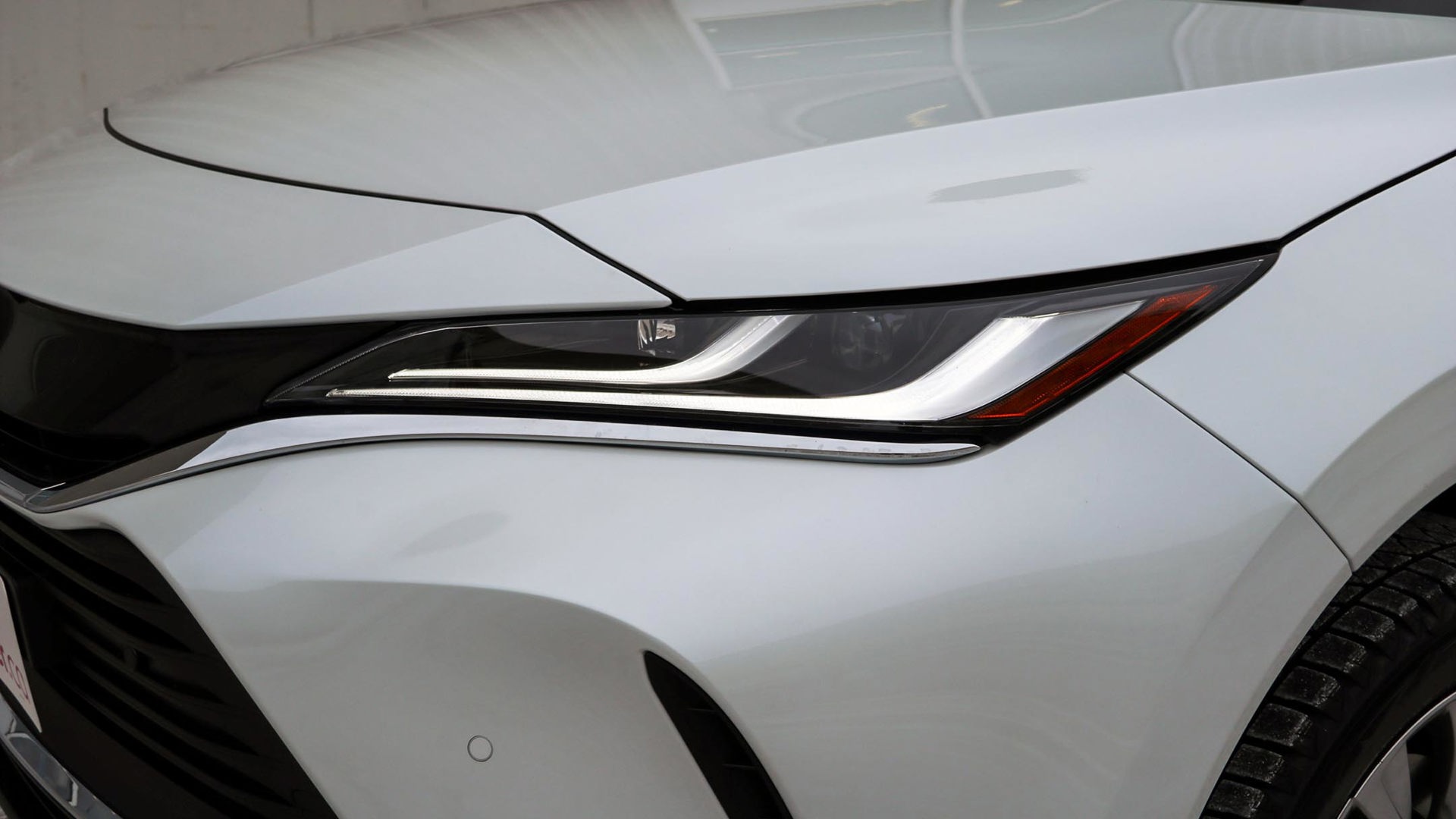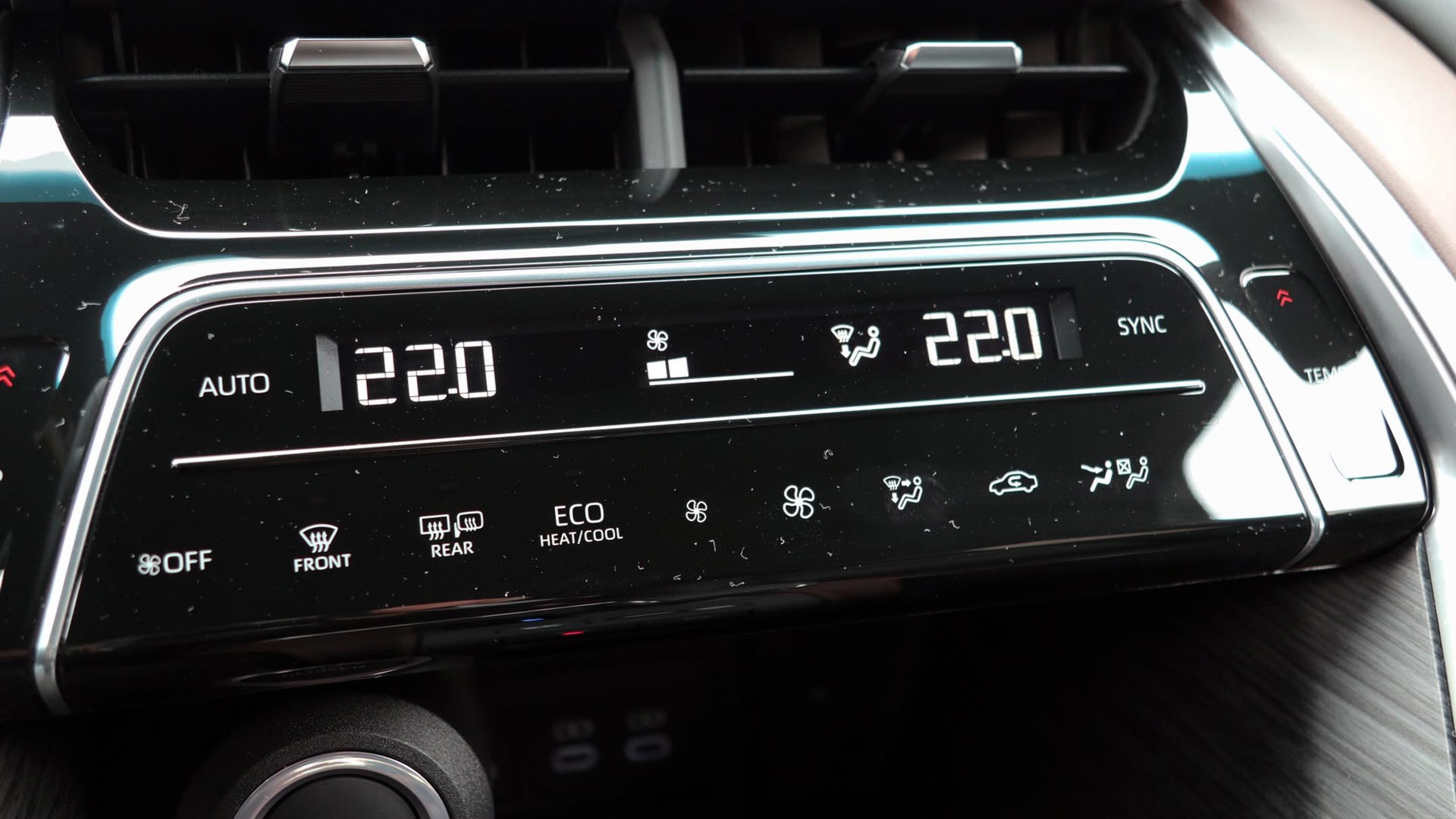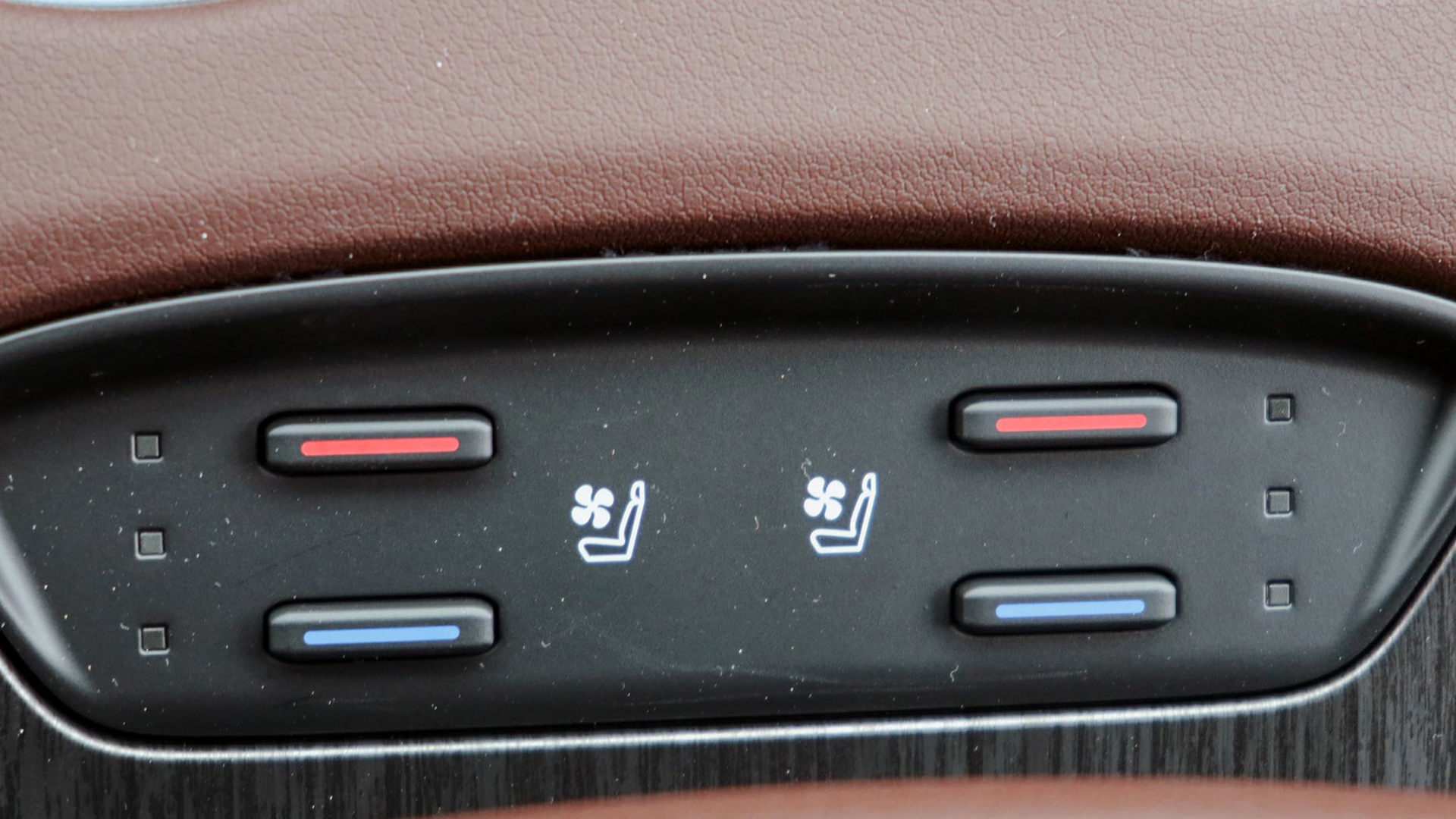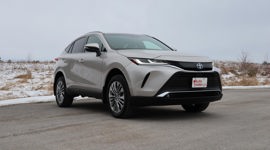 AutoTrader SCORE
AutoTrader SCORE
-
STYLING8/10
-
Safety8/10
-
PRACTICALITY6/10
-
USER-FRIENDLINESS8/10
-
FEATURES8/10
-
POWER8/10
-
COMFORT8/10
-
DRIVING FEEL8/10
-
FUEL ECONOMY9/10
-
VALUE8/10
With a fancy new – and similarly sized – crossover on its way, the 2024 Toyota Venza marks the end of the road for this hybrid-only offering.
Unchanged this year, it features standard all-wheel drive (AWD) and comes in three trim levels starting with the LE at $44,480, including a non-negotiable delivery fee of $1,930. The mid-range XLE is $50,720; while my Limited tester started at $54,180 and had a $255 coat of Wind Chill Pearl paint added for a total of $54,435.
Styling: 8/10
The Venza is a good-looking vehicle overall, although this tester’s light exterior hue shows off how large and nose-heavy its black lower grille looks. The interior tends to put form over function, with a console and centre stack design that’s interesting but doesn’t offer much small-item storage space. Still, the soft-touch surfaces, stitched dash, and woodgrain trim add to the luxury appearance.
Safety: 8.5/10
The 2024 Toyota Venza receives the highest five-star crash-test rating from the U.S. National Highway Traffic Safety Administration (NHTSA). It received a Top Safety Pick award from the Insurance Institute for Highway Safety (IIHS) for 2023, but it’s expected to lose that for 2024. The IIHS updated its side crash to better simulate being struck by a large SUV, and the Venza rated “Acceptable,” one step down from the top “Good.” The not-for-profit organization rolls out its top award criteria gradually, and while “Acceptable” was enough to earn Top Safety Pick last year, only “Good” is enough this year.
All trims include emergency front braking with pedestrian and cyclist detection, as well as when turning left across oncoming traffic, automatic high-beam headlights, lane keeping and tracing assist, blind-spot monitoring with rear cross-traffic alert, a driver’s knee airbag, front passenger cushion airbag, and the back-up camera that’s mandatory on all new vehicles. The Limited further adds emergency rear braking, and surround-view cameras.
Features: 8/10
Standard items across all three trims include a power tailgate, wireless charger, dual-zone automatic climate control, cargo privacy cover, heated front seats, and a power-adjustable driver’s seat. The LE has an eight-inch centre touchscreen, while the XLE and Limited upgrade to a 12.3-inch screen. Both come with Apple CarPlay and Android Auto connections.
The XLE builds on the LE by adding premium audio, an auto-dimming mirror, heated steering wheel, integrated garage door opener, power passenger seat, faux-leather upholstery, ventilated front seats, driver’s side memory, and 19-inch wheels instead of the 18-inch ones. The Limited tops it off with a camera-based rearview mirror, 12.3-inch digital instrument cluster, and panoramic glass roof that switches from clear to a frosted setting that cuts down on the light coming in.
User-Friendliness: 8/10
The Venza offers connectivity subscriptions, and the Drive Connect feature – optional on the LE, included with a three-year trial on the XLE and Limited – lets you wake up the voice control by saying, “Hey, Toyota” to handle such functions as cabin temperature, navigation, or information from Google. Several other tasks are handled with buttons, including the heated and ventilated seats, or by touching the control panel for the fan speed and temperature. The stereo volume uses buttons, which is better than sliding one’s finger on the screen but not as good as a dial. While the centre stack looks Lexus-like, the steering wheel is pure Toyota with its simple and intuitive controls.
Practicality: 6.5/10
The roofline stays straight over the rear doors, providing sufficient headroom for passengers back there, but the rear window has a sharp rake to it, which reduces visibility and cuts into the cargo space. With the rear seats up, it’s rated at just 816 L, when many of its rivals are above 1,000 L – including its Toyota RAV4 sibling at 1,059 L. With the rear seats folded, the Venza’s capacity increases to 1,560 L, but that’s still at the lower end, where some competitors top 2,000 L. The Venza’s tailgate opening is also small and high, which makes it less practical when loading and unloading large items in particular.
Comfort: 8/10
The Venza has comfortable and supportive seats, and the ride is smooth and quiet; it really is a nice environment inside. Headroom is about average for the segment, and while legroom isn’t quite as generous as with some competitors, most occupants should be fine.
Power: 8/10
The Venza is a hybrid, with a 2.5L gas engine mated to two electric motor-generators, all of which drive its front wheels and recharge the battery. Another electric motor powers the rear wheels, providing the standard all-wheel drive when needed for extra traction. On its own, the gas engine makes 176 hp and 163 lb-ft of torque, but that rises to 219 net hp when gas and electricity are working in combination. It’s not a powerhouse, but it gets through city traffic and passes on the highway without problem.
The Venza doesn’t get plugged in, but recharges its hybrid battery through the stuff under the hood and with regenerative braking, which captures and stores the energy that’s otherwise lost during deceleration and braking. It switches automatically between gasoline, electricity, or a combination of both, depending on driving conditions, but it’s not as smooth a transition as in the Toyota Prius.
Driving Feel: 8.5/10
The Venza is easy to drive, with light steering and predictable handling, including smooth cornering with very little body roll. The engine can get noisy when asked for hard acceleration, but it quickly calms down once it reaches cruising speed, and it’s comfortable for longer highway drives. The term “crossover” is often overused, but for its ride and handling, the Venza tends to feel more like a large car than a taller SUV. It brakes well, and while a few hybrids can exhibit a bit of harsh pedal feel due to that regenerative braking system, there’s none of that here.
Fuel Economy: 9/10
Natural Resources Canada (NRCan) rates the Venza at 5.9 L/100 km in the city, 6.4 on the highway, and 6.1 in combined driving. I came in at 8.4 L/100 km during a bitterly cold week with it. It’s fine on regular-grade gas.
All of its midsize hybrid rivals are pretty much at the same level, where the Ford Escape and Toyota RAV4 are rated for 6.0 L/100 km, while the Honda CR-V and Hyundai Tucson are rated for 6.4.
Value: 8/10
The Venza runs from $44,480 to $54,180, which puts it about mid-level among its hybrid competitors, all of which come standard with AWD or offer it. The Toyota RAV4 starts below it, as expected, at $37,880 to $48,880. The Hyundai Tucson also has a lower price at $42,549, while the Ford Escape with optional AWD begins at $44,644, and the Honda CR-V starts at $51,775 (all prices including delivery).
The Verdict
The 2024 Toyota Venza occupies an unusual niche. While it wears a Toyota brand, it straddles a narrow line between that and Lexus, offering a luxury look and feel, but with some characteristics of the mainstream brand. For those who don’t always carry a full load of people or cargo, and who like the RAV4 but want to move a step up in terms of features and feel, the Venza could be the right choice.
| Engine Displacement | 2.5L |
|---|---|
| Engine Cylinders | I4 |
| Peak Horsepower | 176 hp @ 5,700 rpm (gas engine only); 219 hp net (hybrid) |
| Peak Torque | 163 lb-ft @ 5,200 rpm |
| Fuel Economy | 5.9 / 6.4 / 6.1 L/100 km cty/hwy/cmb |
| Cargo Space | 816 / 1,560 L seats up/down |
| Model Tested | 2024 Toyota Venza Limited |
| Base Price | $52,250 |
| A/C Tax | $100 |
| Destination Fee | $1,930 |
| Price as Tested | $54,535 |
|
Optional Equipment
$255 – Wind Chill Pearl paint, $255
|
|










































